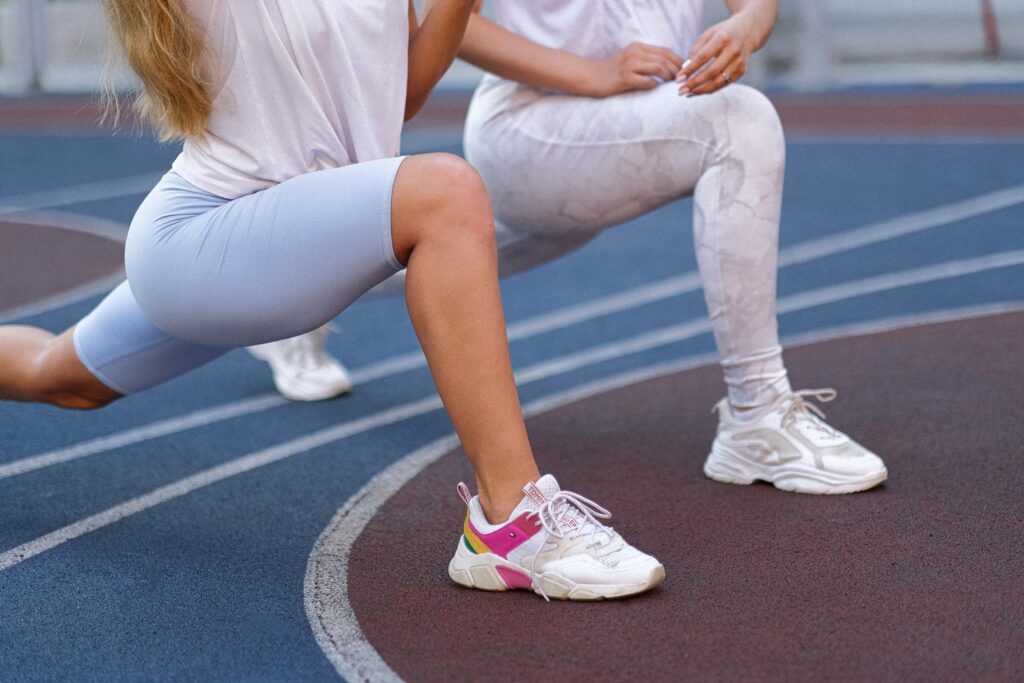The 3 easiest and most effective exercises to train legs.
Leg training is just as important as upper body training and has an impact on overall performance.
Leg exercises are not a favorite among fitness enthusiasts. Many prefer to focus their workouts on more visible areas – which aesthetically rank better – such as the abdomen, arms, back, and pecs.
It is important to know, however, that most leg exercises have compound movements that work a good number of muscles in the body. With the legs, we train the hamstrings, calves, quadriceps, and also buttocks, which tend to gain prominence when summer approaches.
But leg work also helps to strengthen the back and torso to avoid – or reduce – lower back pain and have a better body posture. And there’s more: being the largest muscle group, it is excellent for strength and cardio training, and caloric consumption is very high.
As for runners, complementary leg exercise is essential to increase power, endurance, and speed. It also reduces the risk of injury.
In short, training the legs is as important as training the upper body and has an impact on overall performance. Here are the 3 easiest and most effective leg training exercises.
What are the 3 easiest and most effective exercises to train legs?
Omar Zarate, Mega cross coordinator for the Megathlon Network, explains the 3 training exercises that, with little or no equipment, allow you to gain strength in the whole body and especially in the legs. “As with any complete and functional exercise, the key to maximizing performance and avoiding injury will be in good execution,” the trainer warns us.
1) Overhead squat

Before performing overhead squats, an efficient and safe squat technique without an element must be achieved.
In a standing position and with feet “shoulder-width apart,” bend knees and hips to go to a “sitting in the air” position. Ideally, in the low squat position, the thighs should be parallel to the floor or break parallel (in the side view, the hips are just below the knees).
The spine should remain in a neutral position at all times (do not round the back), the bodyweight should be well distributed on the soles of the feet (do not elevate heels) and the knees should not come together. The repetition ends when returning to the standing position. As an initial practice, 3 to 4 sets of 8 to 10 repetitions can be performed.
Once a good squat technique without overload is achieved, you can move on to the goblet squat. Pick up an item (barbell, dumbbell, or kettlebell) with both hands and, placing it in front of your chest, perform the squat movement.
2) Back Lunge

The practice of this exercise begins without overload. In a standing position and with feet “hip width” apart, take a long step backward to touch the floor with the knee (very gently).
In the low lunge position, the knee angles should be at approximately 90 degrees, as should the hip angle of the front leg. From this low position, powerfully extend both legs to return to the starting position. Perform a new repetition, now with the other leg. As an initial practice, we can perform 3 to 4 sets of 10 to 20 repetitions (work divided between both legs).
When a safe and efficient technique is achieved when performing the lunges (spine in the neutral and vertical position at all times and soft touch of the knee on the floor), the exercise can be progressed by incorporating an overload (water bottles, jerrycan, loaded backpack, dumbbells or kettlebells).
3) Deadlift

For a beginner, an element of between 5 and 10 kilos (jerrycan, loaded backpack, dumbbell, or kettlebell) will be enough.
The exercise consists of taking a load on the floor with both hands, extending the body, lifting the load, and remaining in a standing position. The arms are used as “straps”, the back muscles stabilize the spine at all times, the hamstrings (back of the leg, from the thigh to the knee) and buttocks are contracted to extend the hip (great hinge of the body) and the quadriceps extend the knees. The load is then lowered using the same path traveled in the ascent.
Ideally, in the lateral view and when picking up the element, the shoulders should be slightly above the hips. The degree of knee flexion will be the one that allows achieving the previous point. The spine, throughout the execution of the dead weight, should remain in a neutral position (do not round the back to avoid injury). As an initial practice, 3 or 4 sets of 8 to 10 repetitions can be performed.
This content is published for informational purposes only and cannot replace the work of a professional. We recommend that you consult with your trusted specialized professional.



